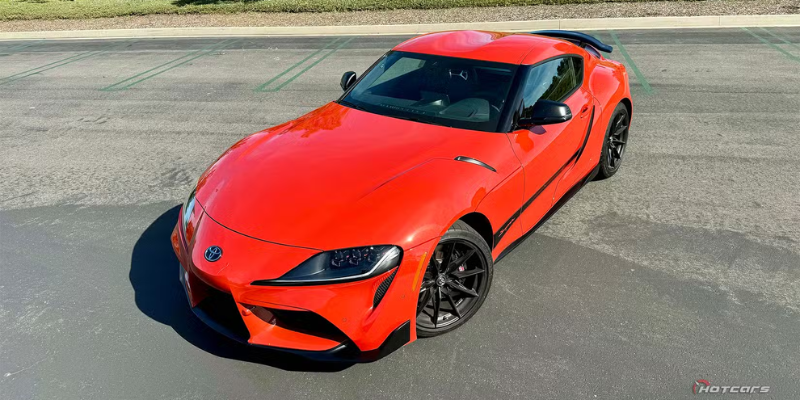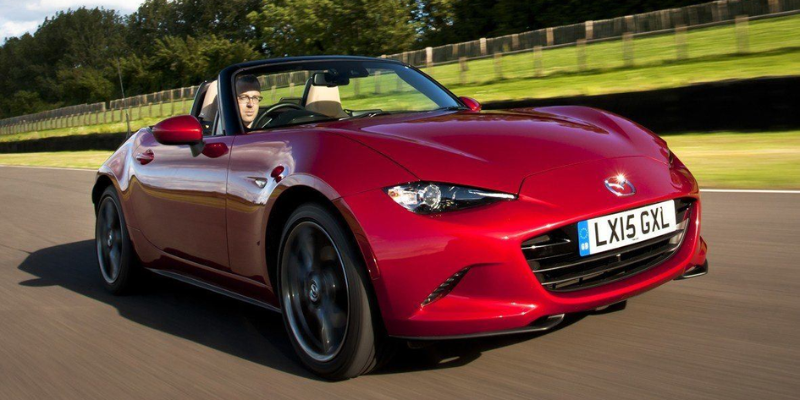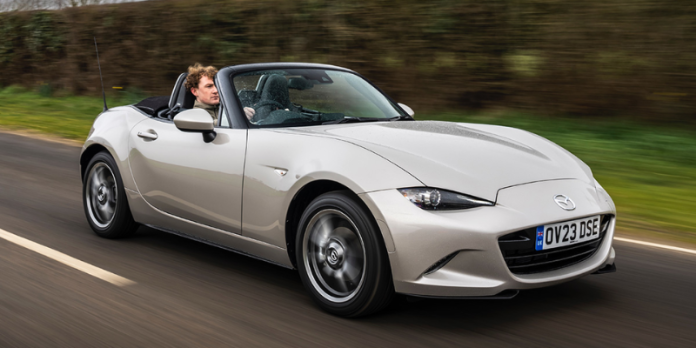In the dynamic world of automotive enthusiasts, the allure of a sports car often comes with the practical consideration of insurance costs. While the thrill of performance and agile handling is undeniable, the potential impact on your wallet, let’s join Goldnews24h to demystify the factors that influence sports car insurance rates and, more importantly, highlight some of the cheapest sports cars to insure on the market. Our aim is to equip you with the knowledge to make an informed decision, ensuring your passion for driving doesn’t come at an exorbitant price.
The enigma of sports car insurance premiums

The perception of sports cars often leads to assumptions of astronomical insurance costs. Insurers categorize vehicles based on risk, and high-performance machines are typically associated with increased likelihood of accidents, higher repair expenses, and greater theft potential. This categorization is rooted in actuarial data, reflecting the real-world outcomes of driving and owning such vehicles. However, not all sports cars are created equal in the eyes of an insurance provider. Certain models manage to balance exhilarating performance with practical considerations, which can significantly influence their insurance profiles, sometimes resulting in surprising affordability.
The complex algorithms used by insurance companies take into account a multitude of data points, far beyond just horsepower figures. They delve into crash statistics, the cost of replacement parts, the prevalence of a model among high-risk demographics, and even the vehicle’s inherent safety features. Understanding these underlying mechanisms is crucial for any discerning buyer looking to navigate the market efficiently. This detailed analysis allows us to separate myth.
Key determinants impacting insurance costs

Insurance premiums are not arbitrary figures; they are meticulously calculated based on a blend of vehicle-specific attributes and individual driver characteristics. For sports cars, these factors are often amplified due to the performance-oriented nature of the vehicles. A deep dive into these determinants reveals why some sports cars remain relatively affordable to insure while others carry a hefty premium. Recognizing these elements empowers buyers to make choices that align with their financial planning without compromising their automotive aspirations.
Vehicle characteristics and safety
The inherent design and engineering of a sports car play a paramount role in its insurance costs. Factors such as engine size and horsepower directly correlate with speed potential and, consequently, accident risk. Vehicles with higher power outputs are generally associated with a greater chance of high-speed collisions. Furthermore, the availability and cost of replacement parts significantly influence repair expenses after an incident. Models with rare or specialized components will naturally incur higher repair bills, which translates to elevated insurance premiums. Advanced Driver-Assistance Systems and robust passive safety structures, however, can mitigate these costs by reducing accident severity and improving occupant protection, making a car more appealing to insurers. Finally, a vehicle’s theft rate is a critical consideration; popular targets for theft tend to have higher comprehensive insurance rates.
Driver profile and history
Beyond the vehicle itself, the individual behind the wheel is a primary factor in determining insurance rates. Age and driving experience are crucial, with younger, less experienced drivers typically facing higher premiums due to statistical correlations with increased accident rates. A clean driving record, free of speeding tickets or accident claims, is perhaps the most significant personal factor for lowering insurance costs. Conversely, a history of infractions will inevitably lead to higher rates. Your geographic location also impacts premiums, as urban areas with higher traffic density and crime rates generally incur greater risks for insurers than rural regions. These personal attributes are continuously assessed by insurance providers, shaping the final cost of coverage.
Coverage type and deductibles
The type and extent of insurance coverage you choose, along with your selected deductibles, directly influence your premium. Opting for minimum liability coverage will naturally be chea. Higher deductibles—the amount you pay out-of-pocket before your insurance kicks in—typically result in lower monthly premiums, as you’re taking on more of the initial risk. Striking the right balance between coverage and cost requires a careful assessment of your personal risk tolerance and financial capacity.
Identifying the cheapest sports cars to insure in today’s market
Having established the various factors influencing insurance premiums, Goldnews24h can now spotlight specific sports car models that frequently appear on lists of affordable-to-insure vehicles. These cars often strike an impressive balance between engaging performance, reasonable acquisition costs, good reliability, and strong safety ratings. Our selection focuses on vehicles that deliver a genuine sports car experience without demanding exorbitant insurance premiums, making them excellent choices for enthusiasts mindful of their budget. These examples demonstrate that enjoying spirited driving doesn’t necessarily mean breaking the bank on annual coverage.
Mazda MX-5 Miata: The lightweight champion
The Mazda MX-5 Miata consistently ranks among the most affordable sports cars to insure, a testament to its philosophy of lightweight agility over brute force. Powered by a naturally aspirated 2.0-liter four-cylinder engine, it delivers 181 horsepower and 151 lb-ft of torque, allowing for a 0-60 mph acceleration in around 5.7 seconds. Its relatively modest power output, combined with its excellent reliability, contributes to lower accident rates and repair costs. The Miata’s widespread availability of parts and ease of maintenance further reduce expenses in the event of a claim. Fuel economy is also impressive, with EPA estimates of up to 26 MPG city and 35 MPG highway, minimizing day-to-day operating costs.
Safety-wise, while dedicated IIHS or NHTSA crash test ratings for the current generation are less comprehensive than for higher-volume vehicles, the Miata’s inherent balance and responsive handling contribute to accident avoidance. Mazda’s commitment to quality also translates into solid reliability. Consumer Reports consistently rates Mazda vehicles highly for reliability, indicating fewer unexpected repair costs over ownership. This blend of sensible power, accessible pricing, and robust engineering makes the MX-5 Miata an exemplary choice for those seeking the cheapest sports cars to insure.
Subaru BRZ/Toyota GR86: Precision and balance
The Subaru BRZ and its twin, the Toyota GR86, are celebrated for their superb handling, engaging driving dynamics, and affordability, which extends to their insurance profiles. Both vehicles share a 2.4-liter naturally aspirated flat-four engine, producing 228 horsepower and 184 lb-ft of torque. This allows for a 0-60 mph sprint in approximately 5.4 to 6.1 seconds, depending on the transmission and specific test. Their moderate power output, rear-wheel-drive layout, and precise steering make them exhilarating yet manageable, which insurers appreciate.
Critically, the BRZ earned a 2022 IIHS TOP SAFETY PICK+ award, receiving “Good” ratings in all crashworthiness evaluations and “Superior” ratings for front crash prevention with its EyeSight Driver Assist Technology on automatic transmission models. The GR86 also offers a suite of driver-assistance features and safety technologies. Both models benefit from Subaru and Toyota’s reputation for reliability. Consumer Reports has ranked the BRZ/Toyota 86 twins highly for reliability in the past. Fuel economy for these twins is respectable, with manual transmission models achieving around 20 MPG city and 27 MPG highway, while automatics see slightly better figures of 21 MPG city and 30-31 MPG highway. Maintenance costs are also generally favorable, with estimates for the GR86 around $1,571 for the first five years, beating the segment average. The BRZ’s maintenance costs are estimated at approximately $6,838 over ten years, which is less than the industry average for popular coupe models.
Entry-level Ford Mustang EcoBoost: American muscle with a sensible side
While often associated with potent V8 engines, the Ford Mustang EcoBoost offers a more budget-friendly entry into American muscle, particularly regarding insurance. The 2.3-liter turbocharged four-cylinder engine delivers 315 horsepower and 350 lb-ft of torque, enabling a 0-60 mph time in approximately 4.9 seconds. While more powerful than the Japanese roadsters, the EcoBoost engine’s relative efficiency and lower overall price compared to its V8 siblings often result in more favorable insurance rates. It provides a significant performance punch without the extreme premiums sometimes associated with higher-tier Mustang variants.
Fuel economy for the EcoBoost is commendable, with EPA estimates reaching up to 22 MPG city and 33 MPG highway with the 10-speed automatic transmission, or 21 MPG city and 32 MPG highway with the manual. This blend of power and efficiency, coupled with available safety features, helps maintain relatively manageable insurance costs. While the Mustang is a popular vehicle, the EcoBoost variant appeals to a broader demographic, potentially contributing to a more balanced risk assessment by insurers. For those seeking the blend of iconic styling and accessible performance among the cheapest sports cars to insure, the EcoBoost Mustang offers a compelling argument.
Beyond premiums: Total cost of ownership for budget-friendly sports cars
While securing affordable insurance is a significant win, it’s crucial to consider the total cost of ownership (TCO) to truly gauge a sports car’s long-term financial viability. The initial purchase price and insurance premiums are just two pieces of the puzzle. Other substantial expenses include fuel, routine maintenance, unexpected repairs, and depreciation. For example, a Subaru BRZ will cost about $6,838 for maintenance and repairs over its first 10 years, which is better than the industry average. A Toyota GR86 has an estimated maintenance and repair cost of $1,571 over five years, significantly less than the average for popular coupe models. These figures underscore the importance of looking at the complete financial picture, not just the monthly insurance bill, to fully understand the financial commitment of sports car ownership.
Depreciation, the loss in a vehicle’s value over time, can be a hidden but substantial cost. Fuel consumption, even for efficient sports cars, can add up, especially with premium fuel requirements for many performance engines. For instance, the BRZ/GR86 require premium unleaded fuel. Routine maintenance, such as oil changes and tire rotations, is standard, but specialized sports car components might incur higher costs. Common faults, though less frequent in reliable models like the Miata or BRZ/GR86, can also arise, necessitating repair funds. Carefully evaluating these factors helps prospective owners understand the true financial implications, ensuring their chosen sports car remains a joy rather than a burden.
Strategies to optimize your sports car insurance premiums
Even with models recognized as the cheapest sports cars to insure, there are proactive steps you can take to further reduce your premiums. As an automotive enthusiast with technical knowledge, leveraging every available advantage can translate into significant savings over time. These strategies often involve a combination of prudent driving habits, smart choices regarding coverage, and taking advantage of available discounts. Implementing these tips can help you enjoy your sports car with greater financial peace of mind.
One of the most impactful strategies is maintaining a flawless driving record. A history free of traffic violations and accidents demonstrates responsible behavior, making you a lower risk in the eyes of insurers. Opting for higher deductibles is another effective way to lower your monthly payments, provided you have an emergency fund to cover potential out-of-pocket expenses. Bundling your auto insurance with other policies, such as home or renters insurance, often unlocks multi-policy discounts. Furthermore, inquiring about discounts for defensive driving courses, good student standing (if applicable), or low annual mileage can yield additional savings. Installing aftermarket anti-theft devices can also sometimes qualify you for a discount, as they reduce the risk of vehicle theft.
Conclusion
Choosing a sports car that balances exhilarating performance with affordable insurance is entirely achievable for the astute buyer. As Goldnews24h has outlined, understanding the underlying factors that influence insurance premiums,. Models like the Mazda MX-5 Miata, Subaru BRZ, and Toyota GR86 consistently prove to be among the cheapest sports cars to insure, offering a compelling blend of driving enjoyment, reliability, safety, and manageable running costs. While these vehicles provide an excellent starting point, remember that your personal driving profile and chosen coverage will always play a significant role. Before making your final decision, we encourage you to gather quotes for your specific circumstances and consult detailed total cost of ownership analyses. By combining objective data with your personal needs and budget, you can confidently select a sports car that ignites your passion without straining your finances, ensuring years of thrilling and financially prudent ownership.

